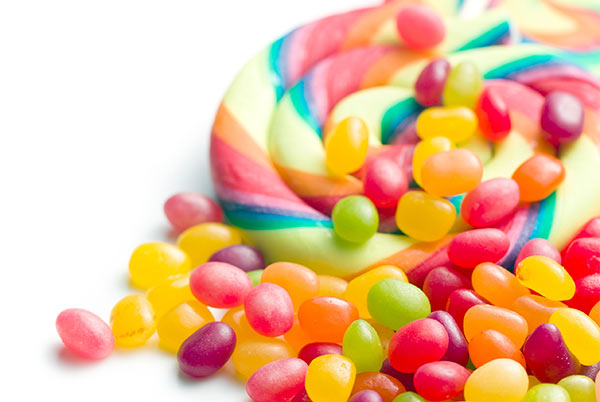
Sugar Binge: How to Rebalance Your Child’s Blood Sugar
You’re relaxing on Easter morning, spending wonderful quality time with your family. You idly munch on jelly beans from the bowl on the kitchen table as you go throughout your day, realizing only when it’s too late that your child has inhaled a massive amount of that candy and is now bouncing off the walls. Uh-oh! You are well aware it’s only a matter a time before that excess energy turns into Miss or Mister Crankypants Extreme.
Many of you have encountered a situation where your child has eaten far too much sugar and you wait with dread for his or her mood to swing wildly as your child’s little body tries to process what is now coursing through his or her veins. The bad news? You’re probably in for a wild ride. The good news? There are a few things you can do to help balance your child’s blood sugar after a sugar binge. The great news? You can help prevent your child’s blood sugar fluctuations before they even start.
What is blood sugar anyway? And how does changing it make kids (and adults, ahem) both crazily energetic and lethargic and cranky? Let’s look briefly at how this works in the body. Blood sugar is the amount of something called glucose present in the blood. Having the right amount of glucose in your bloodstream is essential to survival, but it’s a bit more complicated than that. Glucose comes from many of the foods we eat, but is most commonly found in foods like starches, some vegetables, and fruit. Rice, pasta, potatoes, carrots, bananas, apples, and honey are just a few of the common foods that contain glucose. Glucose is commonly what makes food taste sweet. Knowing this, think about food items like candy, which is 100 percent sweet. Yes, that’s right – candy is almost 100 percent glucose. And eating it causes your blood sugar to spike.
Blood sugar that goes up too fast can cause a variety of symptoms, especially in children. These symptoms include hyperactivity, fatigue, nutrient malabsorption, difficulty sleeping, obesity and weight gain, tooth decay, fungal overgrowths, and depressed immunity. None of those sound fun at all, but depressed immunity means that eating sugar can cause your child to catch colds more frequently! Most parents are fairly familiar with the idea of hyperactivity in children. It’s important to realize that hyperactive behavior can occur after eating sugary foods like soda and candy. In fact, many of us don’t realize that smaller amounts of sugar eaten constantly throughout the day can lead to chronic hyperactive behavior in most children. But, I digress.
What goes up, must come down. Blood sugar often crashes down after the sugar in a child’s system is processed, causing a whole host of unpleasant symptoms. Shakiness, sweating, intense hunger, headaches, crying, sudden mood swings, and irritability can all be associated with blood sugar that drops quickly. Most of us have trouble functioning with these symptoms as adults – imagine what your little person is feeling as he or she tries to manage this feeling of being so out of control!
So, your child is now bouncing off the walls after an Easter candy binge. Here are the four essential steps to limiting your child’s sugar crash.
• Feed your child protein and fat. I suggest promptly feeding your child a tasty snack such as peanut butter on celery, a piece of string cheese, some bell peppers dipped in hummus, or even a small bowl of chili or soup. The goal here is to add protein and fat into the child’s system as soon as possible. When eaten with sugary foods, protein and fat help to slow down the amount of sugar that is absorbed during digestion, thus reducing the amount that is available in the bloodstream as glucose.
• Get your child outside and moving. Take your child to a park, if possible, and let him or her run, climb, jump, kick a ball, or do whatever they want to move around. This will help to burn off some of that excess energy in a safe manner faster than sitting at home playing video games or picking fights with his or her little siblings (who could also be at the park).
• Offer your child water (with lemon, if not allergic to citrus). Water can help to flush your child’s system to help process the excess sugars faster. Aim for five cups of water per day for kids ages 4 to 8 years and six to eight cups of water per day for kids 9 years and older. The added squeeze of lemon helps to make it tasty and stimulates digestion to get sugar out of the system faster.
• Throw out the remaining candy. This one may be a no-brainer, but you’ll all be in for the same rollercoaster day after day if you keep allowing your kids to candy binge. In general, try to also avoid candy before bed. Sugar before bed can cause your child’s blood sugar to go up and then drop quickly during the night, leading the child to wake extra sleepy, frustrated, and ornery.
Fortunately, you can also do most of these things starting a few days before a possible sugar frenzy to help prevent your child’s blood sugar fall-out. The morning before a possible sugar binge, it’s important to fuel your child with healthy whole foods to help set his or her system on a more even keel. Try to include high-protein and nutrient-dense foods like eggs and avocados on whole-grain toast, gluten-free oatmeal with finely chopped walnuts and blueberries, or a healthy and delicious vegetable-rich smoothie. Add a half teaspoon of cinnamon to oatmeal or smoothies, as well – this delicious spice helps to balance blood sugar throughout the day.
We all eat sugar from time to time. Many of our kids eat it far more than is healthy for them. It’s time to take charge of your child’s blood sugar fluctuations and ride this candy-binge all the way to learning how to feed a healthier kid.
 ABOUT THE AUTHOR: Dr. Kelly Baker is a naturopathic physician and acupuncturist at Healthwise Integrative Medicine in Seattle (healthwiseim.com). She treats complex health conditions including celiac disease, with a focus on children and family care. Dr. Baker has followed a strict gluten-free diet for many years, making her uniquely aware of its challenges.
ABOUT THE AUTHOR: Dr. Kelly Baker is a naturopathic physician and acupuncturist at Healthwise Integrative Medicine in Seattle (healthwiseim.com). She treats complex health conditions including celiac disease, with a focus on children and family care. Dr. Baker has followed a strict gluten-free diet for many years, making her uniquely aware of its challenges.



